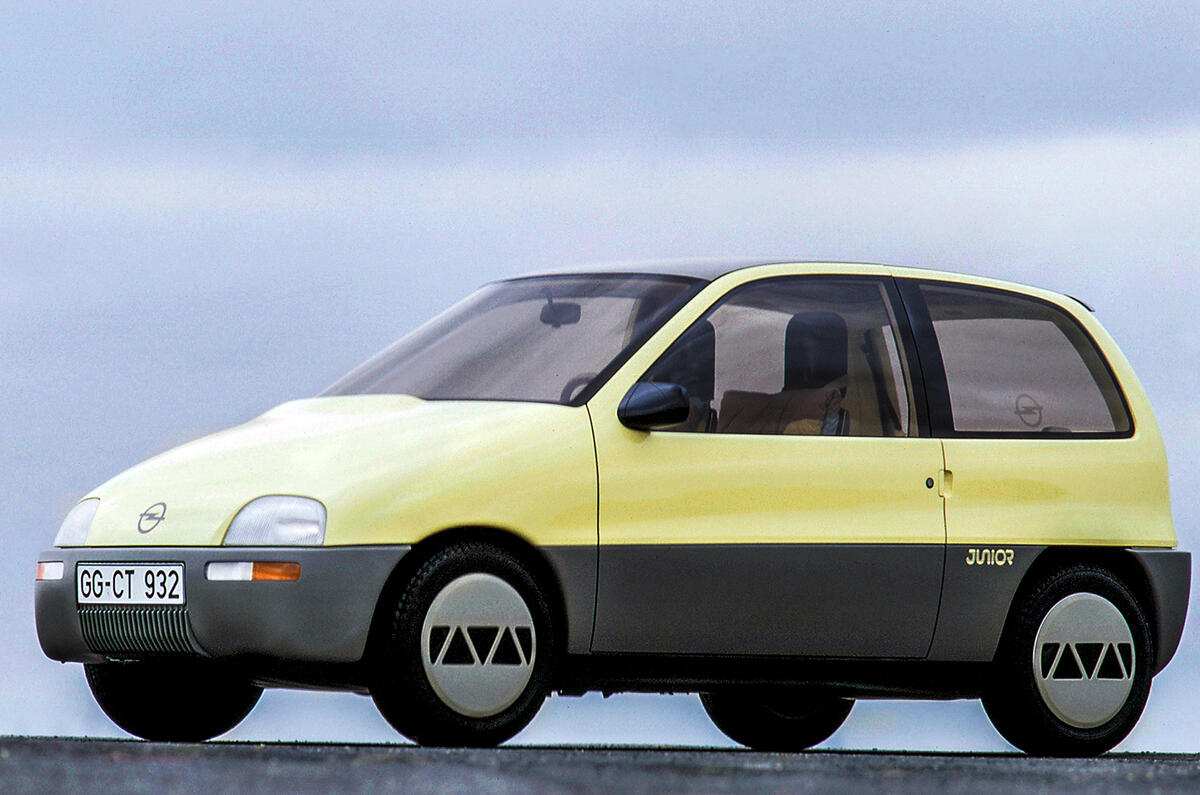The Vauxhall Adam was codenamed Junior during its development, harking back to a concept that was unveiled at the 1983 Frankfurt show.
The original car was the work of GM’s European design studio in Germany, headed by Wayne Cherry. They were given a brief to build a “realistic study of a future-orientated mini”.
Starting with the mechanical package of a Vauxhall Nova 1.2, they made a smooth, aerodynamic bodyshell that was eight inches shorter overall than a Nova and had a drag coefficient of 0.31.
The Junior was a three-door with accommodation for four and the usual seat-folding capability of a hatchback. The tailgate was double hinged so it ‘jack-knifed’ when opened, thereby needing 12in less space than a conventional tailgate. The concept featured a fixed plastic roof, but the idea was that it could be a removable glass panel or a fold-back canvas top.
The interior of GM’s design study – “designed for the young and the outdoor life”, according to Autocar’s description at the time – contained a wealth of clever ideas that were intended to filter into production cars of all shapes and sizes.
The modular dashboard was essentially a row of cubes sitting atop the fascia rail – some essential like the speedometer and fuel gauge, others optional. All were easily moved to other locations, as they were attached via integral plugs to a ‘ring main’ of wiring along the mounting rail.
The design made it easier for left or right-hand-drive versions to be made and would enable an owner to select and install extra instruments with ease.
The seats had tubular frames with moulded plastic back supports that could be adjusted up and down by ski boot-like buckles. They were covered with padded nylon one-piece cushions, like duvets, which could be unbuckled, removed and opened out to be used as sleeping bags or ground sheets.
The rear seat featured similar cushions, but the seatback was a nylon net on a tubular frame which, when swung forward to increase the load space, formed a full-depth luggage barrier or dog guard.
GM’s designers had a lot of fun creating specially formed luggage to fit into the Junior. “There is room in the bottom of the wide doors for big net pockets that can contain either soft bags or ‘modular’ hard-shell cases,” explained Autocar at the time.
“The latter have been made into beauty cases, camera holdalls, tool kits and so on, and the same size box shell can be used in the fascia itself and on runners under the front seats. They seem to have thought of everything.”




Join the debate
Add your comment
"They seem to have thought of everything.”
amazing car